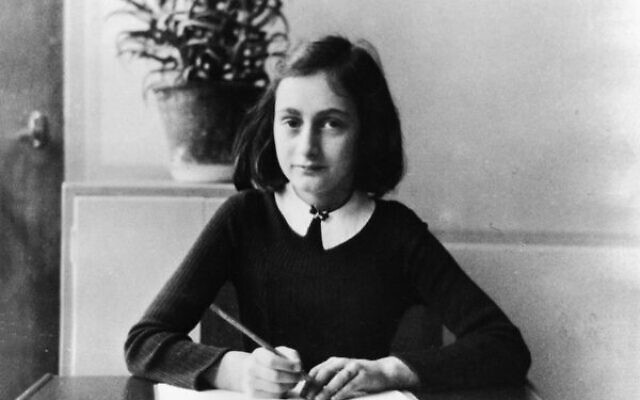Painful aftermath to Anne Frank cold case
'I speak for and with survivors and descendants of the Van den Bergh family'
Anne Frank, a teenage Jewish girl whose diary made her the most famous victim of the Holocaust, was arrested on August 4, 1944, in the Achterhuis – annex of her father’s office in the city centre of Amsterdam, where she, her parents and older sister Margot together with four other Jews were in hiding.
Who betrayed them? The question has been a source of speculation and research ever since Otto H Frank, Anne’s father and sole survivor of the eight, returned from Auschwitz in the summer of 1945.
In 2018 Thijs Bayens appeared at my office in my role as director of NIK, the umbrella organisation of Jewish communities in the Netherlands. He introduced himself as the one who has set up a team to investigate the cold case of who betrayed Anne Frank.
Additionally, he explained to me that it seems he somehow has Jewish roots since his grandmother’s name is Polak. I waited to find out what he wanted from me. Yet he didn’t want anything from me except my trust. Bayens focused on the Polak-name not realising to say the least, that Polak isn’t a solely Jewish name.
Now, close to four years later, Bayens appeared again in my life and this time in the lives of many others too, as he disclosed the result of the cold case investigation – that Arnold van den Bergh, a Jewish notary, is the one, who with 87 per cent certainty, informed the Nazis about the secret annex where the Frank family and the others were in hiding.
The press campaign for the cold case result was truly overwhelming. Directly after the news broke on CBS’ 60 Minutes following the publication in January this year of the book The Betrayal of Anne Frank written by Canadian Rosemary Sullivan, the media worldwide came out with the same screaming message, all pointing fingers to the Jewish notary.
And Bayens emotionally told TV host Margriet van der Linden that he’s of Jewish descent, Polak, but that was never spoken about, “but the pain was there”. Which pain? Not the pain my family felt after they reemerged from their hiding place after they left the same block of houses behind the Concertgebouw in Amsterdam where Bayens’ grandmother lived and continued to live, during World War II, with no fear of being rounded up as a Jew, no Jews’ star, nothing.
Virtually no one asked any questions.
I did. Where was Van den Bergh on the day Anne Frank was caught – August 4, 1944?
It didn’t take me more than 50 minutes to get confirmed that Arnold van den Bergh and his wife were in hiding in the village of Laren, not far from Amsterdam. I was even told the exact address. The team must have found Laren too and must have decided to leave out that crucial fact. Why was Laren left out as an option in the book which was published based on the findings of the Anne Frank cold case team? You wonder: why did the team lack reflection? There is but one answer to me – because it didn’t want reflection.
Additionally other serious mistakes were found in Sullivan’s book. The biggest mistake is that the research done is no other than building assumption on assumption on assumption.
One assumption is that there might have been lists of hiding addresses that Van den Bergh as a member of the Jewish Council could get hold of.
With this theory of an unaccounted-for list of hiding addresses, the cold case team easily expanded the impeachment of Van den Bergh from not just betraying Anne Frank and her family to who knows how many other addresses and other Jews in hiding, as a list by definition doesn’t contain just one piece of information, it’s a list.
Bayens is the creator of the cold case nightmare in which the Van den Bergh family ended up. But not just this family. All Dutch Jews and all the Jews who, unfortunately not wrongly, think that they too could one day be Anne Frank, are forever stamped with this accusation.
The danger of such a false accusation is not to be considered lightly. Antisemitism is there in Europe and lately we have seen serious physical manifestations of antisemitism in the United States.
Dr Lou de Jong, author of the standard work on the Netherlands during World War II, estimates that one third of the people in hiding were betrayed. Every post-war Dutch Jewish family has “being betrayed” in its DNA.
The Betrayal of Anne Frank is being published by HarperCollins in more than 20 countries. Soon after the first critical remarks by Holocaust historians appeared, the European Jewish Congress called for a halt on further printing of the book until the research done has been professionally analysed.
The Australian branch of publisher HarperCollins accompanies the publication of The Betrayal of Anne Frank with the following explanation on its Twitter account: “The findings, published in full in Rosemary Sullivan’s book The Betrayal of Anne Frank, are already provoking soul-searching in the Netherlands.”
In the meantime, I speak for and with Holocaust survivors and descendants of the Van den Bergh family. If anything is being provoked by the publication of the book, it’s their hearts and their souls.
Ruben Vis (Rotterdam, 1967) hails from a generations-long Dutch-Jewish descent. Vis is on the boards of several national inter-religious affairs committees. With a background in law, journalism and politics, he serves the NIK – the umbrella organisation of Jewish communities in the Netherlands, and recently joined the CJO – Central Jewish Organisation of the Netherlands, the representative organisation of the Jewish community to the Dutch government.
He regularly publishes articles on Dutch Jewish historic subjects.


comments